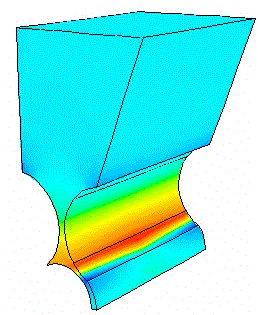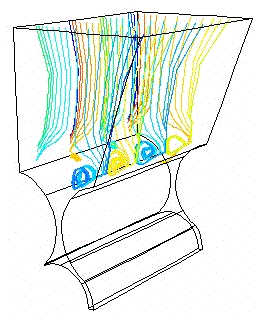 |
In the process of cracker manufacturing, The dough is fed into several
sets of rolls to form a sheet. The feeder itself consists of 2 to 4 rolls which draw
the dough from a hopper and forms a thick sheet that is then fed to other rolls. The
feeder shown above has 3 rolls. The purpose of the 3rd roll (and 4th roll if there
is one) is to pressurize the dough within the rolls which helps maintain dough uniformity.
Here we can see the high pressure region (in orange and red) within the 3 rolls. If there
is variation in the pressure or in the dough thickness or speed, the entire process is
affected, yielding poor uniformity in the final product. In this study, it was desired to control the pressure within the rolls while also controlling the speed and thickness of the dough sheet. All of these parameters are strongly interrelated ("coupled"). Using the developed model, we were able to determine the roll speed and gap settings needed to "uncouple" these parameters, thus enabling tighter control of the whole process. |
